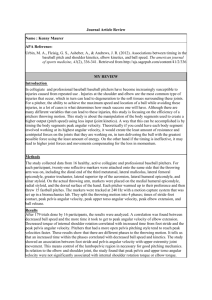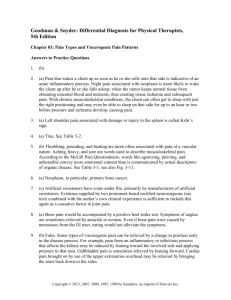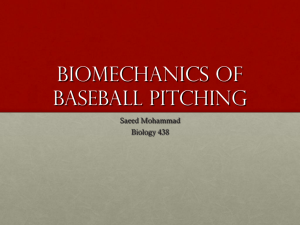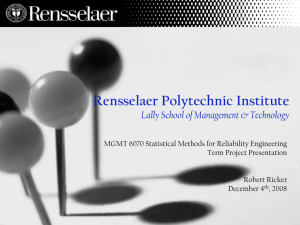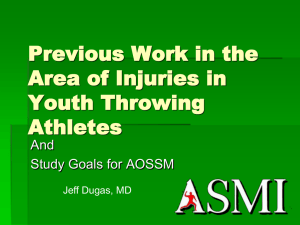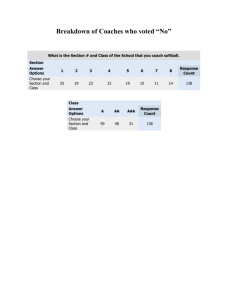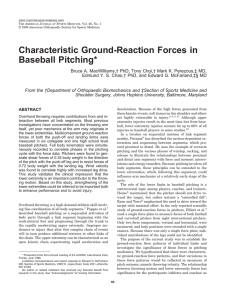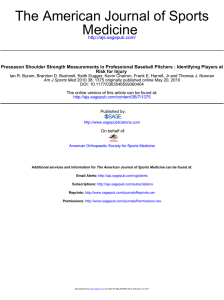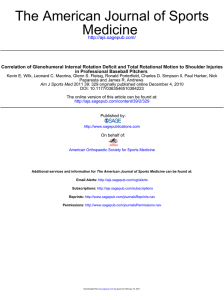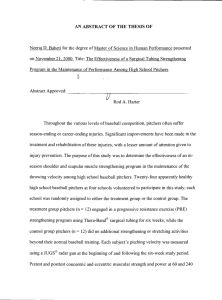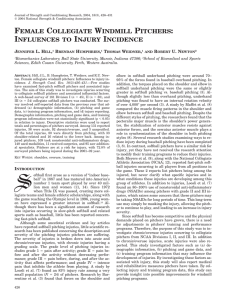TERM PROJECT
advertisement
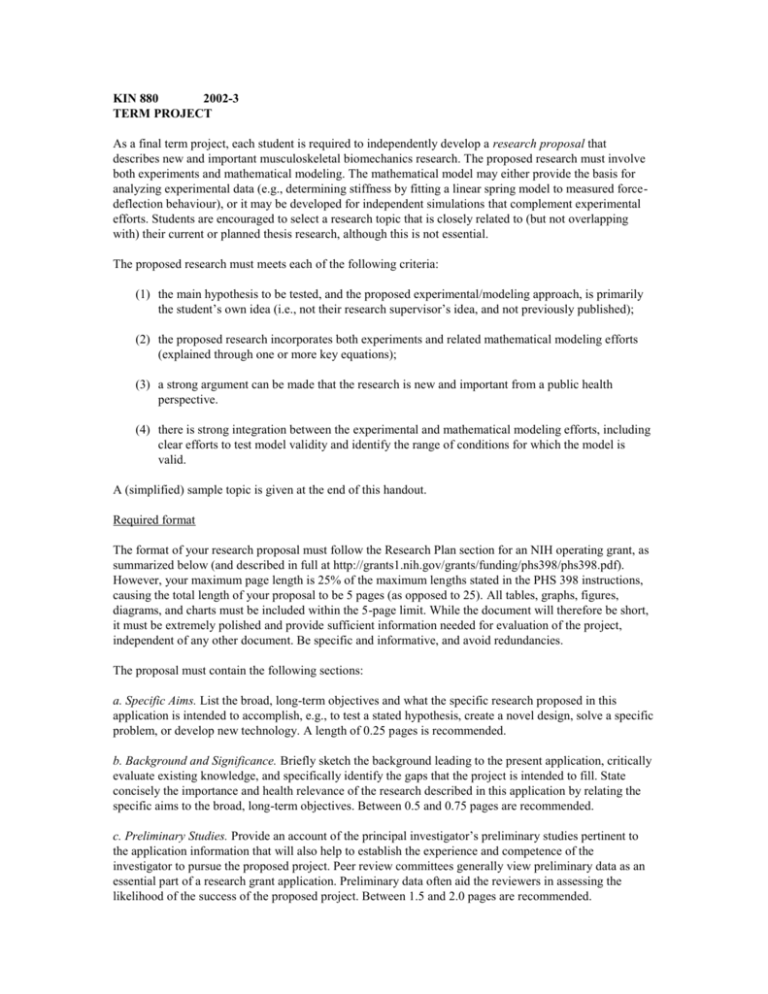
KIN 880 2002-3 TERM PROJECT As a final term project, each student is required to independently develop a research proposal that describes new and important musculoskeletal biomechanics research. The proposed research must involve both experiments and mathematical modeling. The mathematical model may either provide the basis for analyzing experimental data (e.g., determining stiffness by fitting a linear spring model to measured forcedeflection behaviour), or it may be developed for independent simulations that complement experimental efforts. Students are encouraged to select a research topic that is closely related to (but not overlapping with) their current or planned thesis research, although this is not essential. The proposed research must meets each of the following criteria: (1) the main hypothesis to be tested, and the proposed experimental/modeling approach, is primarily the student’s own idea (i.e., not their research supervisor’s idea, and not previously published); (2) the proposed research incorporates both experiments and related mathematical modeling efforts (explained through one or more key equations); (3) a strong argument can be made that the research is new and important from a public health perspective. (4) there is strong integration between the experimental and mathematical modeling efforts, including clear efforts to test model validity and identify the range of conditions for which the model is valid. A (simplified) sample topic is given at the end of this handout. Required format The format of your research proposal must follow the Research Plan section for an NIH operating grant, as summarized below (and described in full at http://grants1.nih.gov/grants/funding/phs398/phs398.pdf). However, your maximum page length is 25% of the maximum lengths stated in the PHS 398 instructions, causing the total length of your proposal to be 5 pages (as opposed to 25). All tables, graphs, figures, diagrams, and charts must be included within the 5-page limit. While the document will therefore be short, it must be extremely polished and provide sufficient information needed for evaluation of the project, independent of any other document. Be specific and informative, and avoid redundancies. The proposal must contain the following sections: a. Specific Aims. List the broad, long-term objectives and what the specific research proposed in this application is intended to accomplish, e.g., to test a stated hypothesis, create a novel design, solve a specific problem, or develop new technology. A length of 0.25 pages is recommended. b. Background and Significance. Briefly sketch the background leading to the present application, critically evaluate existing knowledge, and specifically identify the gaps that the project is intended to fill. State concisely the importance and health relevance of the research described in this application by relating the specific aims to the broad, long-term objectives. Between 0.5 and 0.75 pages are recommended. c. Preliminary Studies. Provide an account of the principal investigator’s preliminary studies pertinent to the application information that will also help to establish the experience and competence of the investigator to pursue the proposed project. Peer review committees generally view preliminary data as an essential part of a research grant application. Preliminary data often aid the reviewers in assessing the likelihood of the success of the proposed project. Between 1.5 and 2.0 pages are recommended. d. Research Design and Methods. Describe the research design and the procedures to be used to accomplish the specific aims of the project. Include how the data will be collected, analyzed, and interpreted as well as the data sharing plan as appropriate. Describe any new methodology and its advantage over existing methodologies. Discuss the potential difficulties and limitations of the proposed procedures and alternative approaches to achieve the aims. As part of this section, provide a tentative sequence or timetable for the project. Point out any procedures, situations, or materials that may be hazardous to personnel or human subjects and the precautions to be exercised. Although no specific number of pages is recommended for the Research Design and Methods section, the total for Items a-d may not exceed 5 pages, including all tables and figures. Note that sections a-d should respectively address the following questions: 1. What do you intend to do? (answered in section a, Specific Aims) 2. Why is the work important? (answered in section b, Background and Significance) 3. What has already been done? (answered in section c, Preliminary Studies) 4. How are you going to do the work? (answered in section d, Research Design and Methods) References must be included and formatted in APA (American Psychological Association) style. Reference lists should be placed at the end of the proposal, and are not included in the 5 page limit. Sample proposal (abstract) Title: “Analysis of human pitching mechanics based on a whip model.” Background: Baseball pitchers often suffer shoulder injury. However, the variables that govern mechanical loading at the shoulder during pitching, and the risk for shoulder injury, are poorly understood. This is a major impediment to the design of injury prevention strategies for pitchers. Proposed research: To address this issue, the proposed research will test the hypothesis that history of injury among baseball pitchers associates with shoulder loads during pitching. To test this hypothesis, we will recruit baseball pitchers with and without a past history of recurrent shoulder injury, and measure upper extremity kinematics during pitching using high-speed motion capture techniques. We will then fit a variety of mathematical models, including a link-segment model and a distributed-mass (whip) model, to the measured kinematics in order to estimate the 3-dimensional forces and moments acting at the shoulder during pitching. We will then test whether predicted peak forces and moments are greater in individuals with a past history of injury. We will also use our models to determine the effect on shoulder joint loading of variations in pitching technique. We expect these results will provide important new understanding on the cause and prevention of throwing-related should injuries. NOTE: the above project, while reasonable in scope, does not address a very important public health issue, and would therefore not be funded by the NIH or CIHR. You proposal must avoid this pitfall – make sure it addresses a highly important and interesting public health issue!
